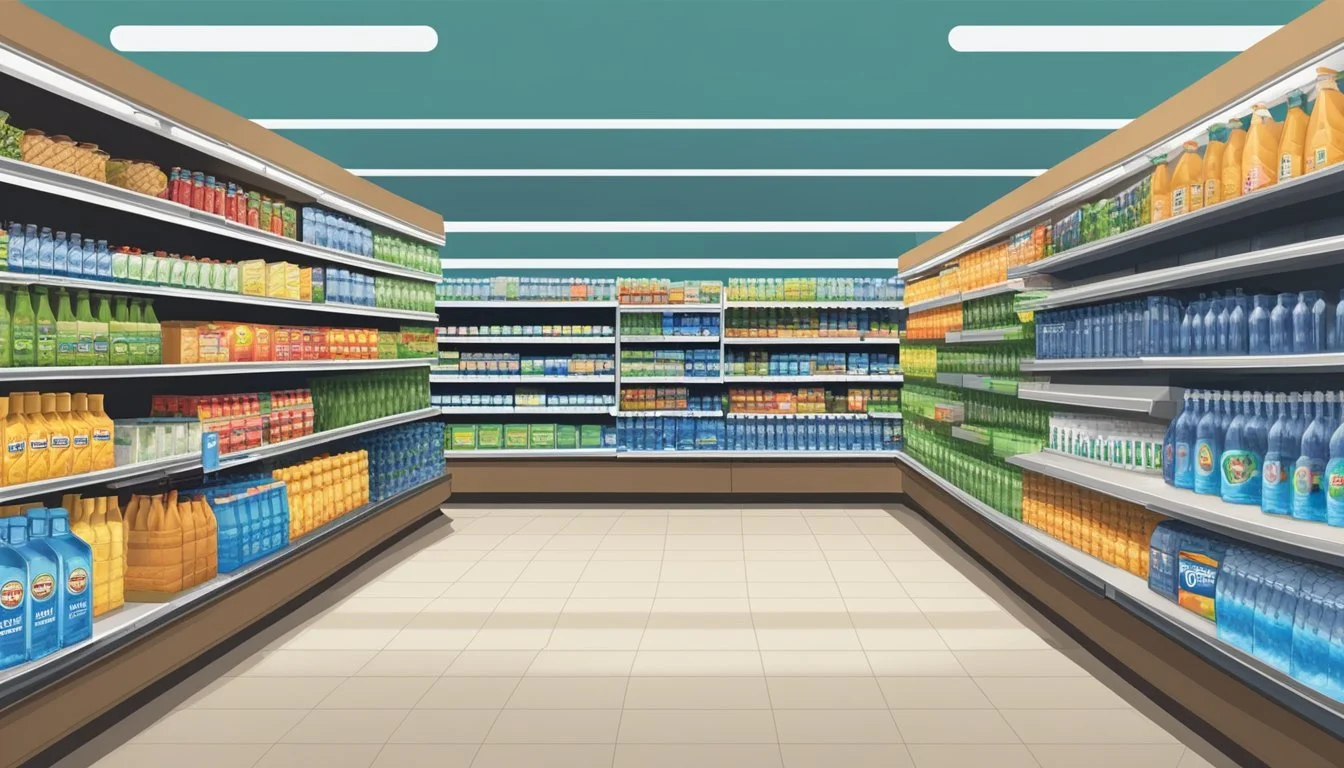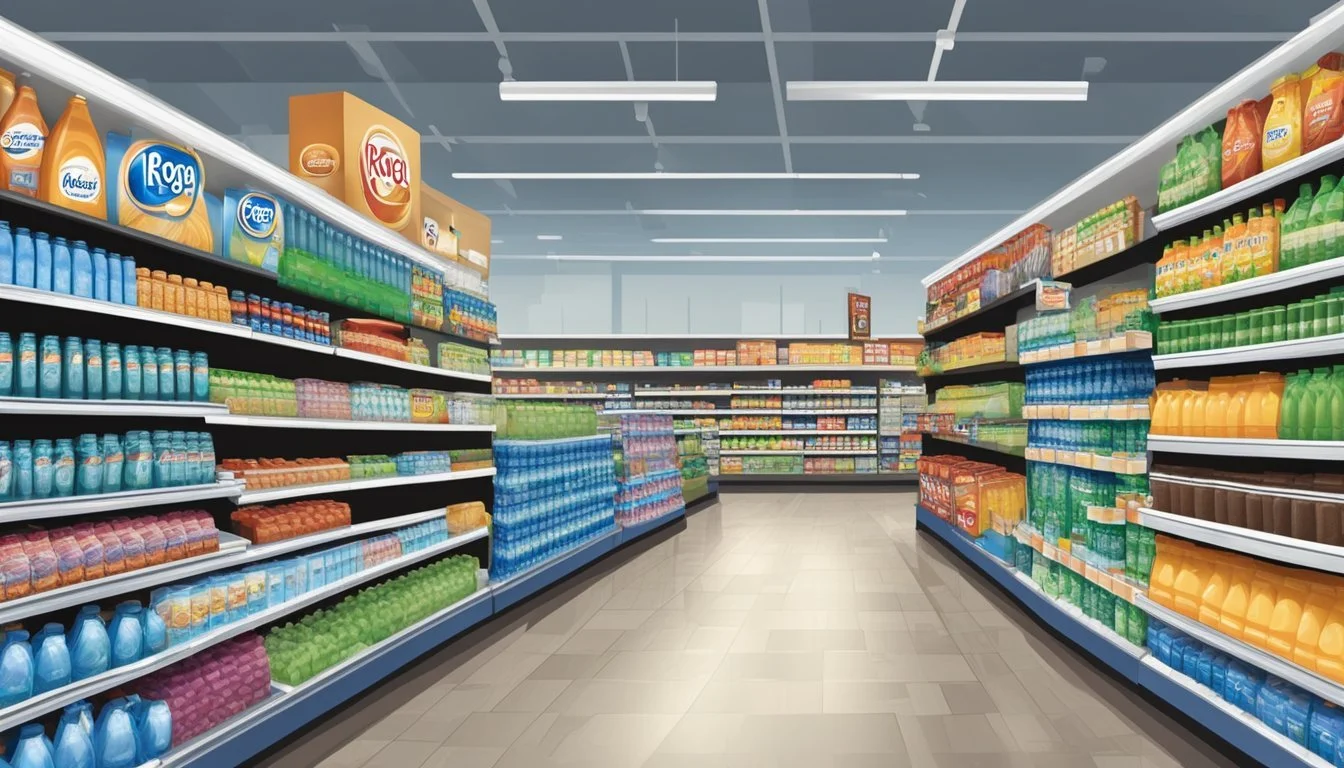Kroger vs. The Well
The Ultinmate Bottled Water Showdown
Choosing the best bottled water can feel overwhelming with various brands available on the market. When deciding between Kroger and The Well, several factors come into play, including taste, safety, and environmental impact. Kroger bottled water adheres to FDA regulations, ensuring it meets safety and quality standards.
Consumers appreciate Kroger's reliability, although concerns about contaminants like microplastics and BPA remain. The company has taken steps to eliminate BPA from many of its plastic bottles, addressing some of these worries. The Well, on the other hand, may offer a different approach or benefits that attract its customer base.
For those prioritizing sustainability, the environmental impact of bottled water is significant. It's essential to consider which brand minimizes pollution and waste better. This article delves into a thorough comparison, helping consumers make an informed choice between Kroger and The Well.
Understanding Bottled Water
Bottled water comes in a variety of types, each distinguished by its source and treatment process. Safety and quality are maintained through strict regulatory standards overseen by relevant organizations.
Defining Bottled Water and Its Types
Bottled water is categorized based on its source and the treatment it undergoes. Spring water is derived from underground formations where water naturally flows to the surface. Purified water has undergone processes like distillation, deionization, or reverse osmosis to remove impurities. Mineral water contains specific levels of trace minerals and is sourced from protected underground reservoirs.
Brands like Essentia offer variations that include added electrolytes for enhanced taste and hydration. Different types of bottled water provide consumers with unique benefits, such as distinct taste profiles and nutritional content.
The Process of Bottling Water
The bottling process begins with sourcing the water, which can be from springs, wells, or municipal supplies. After collection, the water undergoes several stages of filtration and purification to meet FDA and EPA safety standards. This includes removing contaminants like microplastics and toxins.
Once purified, the water is bottled in a controlled environment to prevent contamination. Many companies use BPA-free plastic to minimize health risks. Labeled bottles undergo rigorous quality checks before being distributed.
Regulatory Standards and Organizations
The safety and quality of bottled water are regulated by entities like the FDA and the International Bottled Water Association (IBWA). The FDA sets strict guidelines for contaminant levels, labeling, and processing practices to ensure consumer safety. The EPA regulates bottled water quality in cases where it mirrors public drinking water standards.
Companies must frequently test their products and provide quality reports to comply with these standards. The IBWA also imposes additional guidelines through its Bottled Water Code of Practice, ensuring members adhere to high industry standards.
Comparing Kroger and The Well
Kroger and The Well offer distinct bottled water products that differ in sources, processing methods, taste, and environmental policies. This comparison gives consumers detailed insights to make informed choices between the two brands.
Company Profiles and Water Brands
Kroger is a large, established retailer that offers a variety of products, including their own bottled water. The brand focuses on affordability and accessibility. The Well, on the other hand, is a boutique brand emphasizing premium water offerings with a focus on health-conscious consumers.
Kroger Bottled Water
Well-known grocery chain
Targets value shoppers
The Well Bottled Water
Boutique brand
Targets premium market
Source and Origin of Water Offerings
Kroger's bottled water is typically sourced from municipal supplies, ensuring a consistent and reliable source of hydration. The water undergoes extensive filtration processes to meet safety standards.
The Well sources water from natural springs, offering a more unique and potentially mineral-rich product. This origin contributes to its premium positioning in the market.
Kroger's Water Source
Municipal supplies
Consistent and safe
The Well's Water Source
Natural springs
Mineral-rich
Filtration and Purification Methods Used
Kroger employs standard techniques like reverse osmosis and carbon filtration to purify its water. These methods ensure the removal of contaminants and impurities, providing clean, safe drinking water.
The Well also uses advanced processes, often touting natural filtration through geological formations. Both brands ensure high standards of purity but differ in their approach to achieve it.
Kroger's Purification
Reverse osmosis
Carbon filtration
The Well's Purification
Geological filtration (natural)
Advanced technologies
Taste Profiles and Consumer Preferences
Kroger's water is noted for its neutral taste, which appeals to a broad audience who prefer a clean and simple hydration option. It is often rated positively for its reliability.
The Well offers a more distinctive mineral taste owing to its natural spring sources. This appeals to consumers looking for a unique and potentially health-beneficial taste experience.
Kroger's Taste Profile
Neutral taste
Widely appealing
The Well's Taste Profile
Mineral-rich
Distinctive
Packaging and Environmental Policies
Kroger uses BPA-free plastic bottles and has initiatives to improve environmental friendliness, though its massive scale means a significant environmental footprint.
The Well emphasizes sustainability, often using glass or other reusable water bottles. The brand markets itself as environmentally conscious with policies geared towards reducing plastic waste.
Kroger's Packaging
BPA-free
Plastic bottles
The Well's Packaging
Glass, reusable bottles
Environmentally friendly policies
Health and Quality Considerations
When comparing Kroger and The Well bottled water brands, understanding their health and quality standards is crucial. This discussion focuses on water quality, safety measures, and the impact of potential contaminants.
Importance of Water Quality and Safety
Water quality and safety are paramount for any bottled water brand. Both Kroger and The Well must adhere to strict regulations set forth by the FDA. The safety of drinking water is further reinforced by standards from the EPA, which ensure minimal contaminants. Proper filtration and treatment processes must remove harmful substances such as lead, arsenic, and microbial pathogens. Safe drinking water is essential for maintaining a healthy immune system and overall well-being.
Assessing Contaminants and Chemicals
Both brands take steps to minimize contaminants and chemicals in their products. Studies, however, have shown some bottled water brands may contain trace amounts of contaminants like microplastics, BPA, and PFAS chemicals. Kroger has taken strides towards reducing these risks by using BPA-free bottles.
The presence of chemicals, including fluoride, caffeine, and plastic-derived byproducts like acetaminophen, raises concerns. Such contaminants potentially compromise the health benefits of the water. Consumers should look for brands with transparent testing records to ensure safety.
Ensuring Healthy Hydration
Healthy hydration dictates the choice between Kroger and The Well. The water from both brands should meet federal safety standards, but taste and mineral content could also influence consumer preference. The body relies on clean, uncontaminated hydration to function correctly, impacting everything from kidney function to skin health.
Choosing a brand that prioritizes quality and rigorous testing ensures safe drinking water free from harmful chemicals and contaminants, supporting a healthy lifestyle. Make informed decisions based on the bottling practices and safety credentials of each brand.
Consumer Insights and Market Analysis
Understanding consumer preferences and market dynamics is key in analyzing the competition between Kroger and The Well bottled waters. This section examines consumption trends, brand perceptions, and price considerations for consumers.
Bottled Water Consumption Trends
Bottled water has seen fluctuating sales over the years. Factors driving these trends include increasing health consciousness and convenience. In particular, noncarbonated bottled water remains favored.
Carbonated vs. Noncarbonated:
Noncarbonated: Preferred for daily hydration.
Carbonated: Popular for flavor variety and refreshing taste.
Consumer Reports highlight growing concerns from toxic chemicals like PFAS in some brands, shaping buying decisions. Locally sourced and purified options appear to be gaining trust.
Brand Perception and Market Competition
Kroger:
Known for affordability.
Varies in taste consistency.
Source: Often locally sourced, appealing to environmentally conscious buyers.
The Well:
Marketed as premium water.
Consumer Opinion: Praised for its clean, crisp taste.
Source: Mountain springs, appealing to those seeking natural purity.
Brand loyalty often hinges on perceived water quality and safety. Consumers leaning towards premium brands expect higher quality and are willing to pay more for perceived purity and taste.
Price Considerations and Accessibility
Affordability:
Kroger: Competitively priced, often attracts budget-conscious consumers.
The Well: Positioned at a higher price point, targeting a premium segment.
Accessibility:
Kroger: Widely available in Kroger stores nationwide, ensuring ease of purchase.
The Well: May be more limited in distribution, often found in specialty stores or via online retailers.
Impact on Choices:
Price sensitivity impacts consumer choices, with many opting for Kroger due to its lower price.
Those prioritizing taste and source are more likely to select The Well despite the higher cost.
These insights reveal the complex factors influencing consumer choices between Kroger and The Well bottled water.
Environmental Impact and Sustainability
Understanding the environmental footprint of bottled water and the sustainability initiatives taken by companies is crucial as consumers seek eco-friendly hydration solutions. Addressing key issues related to pollutants, microplastics, and public health, this section examines the impact and corporate responsibility surrounding bottled water production.
Bottled Water and Its Eco-Footprint
Bottled water production and consumption have significant environmental impacts. Plastic waste is a major concern, with millions of plastic bottles ending up in landfills and oceans annually. Microplastics from these bottles contaminate water sources and pose a threat to marine life and human health.
Producing bottled water also requires substantial energy. The Environmental Protection Agency reports that manufacturing and transporting bottled water contribute to greenhouse gas emissions. Additionally, excessive water extraction for bottling can deplete local water resources, affecting communities and ecosystems.
Sustainability Initiatives by Companies
Companies like Kroger are making strides in sustainability. Kroger’s ESG (Environmental, Social, and Governance) report highlights initiatives such as reducing plastic packaging and improving recycling efforts. They aim to use more sustainable materials and increase the number of BPA-free bottles to address health and environmental concerns.
In response to public demand, Kroger has committed to lowering its carbon footprint. This includes optimizing supply chains to reduce emissions and investing in renewable energy. Such initiatives are essential in minimizing the climate impact of bottled water production.
Alternative Eco-Friendly Hydration Solutions
Consumers can adopt eco-friendly hydration solutions to mitigate environmental impact. One effective alternative is using reusable water bottles made of stainless steel or glass. These options reduce plastic waste and are more sustainable in the long run.
Tap water remains a highly viable option. It's regulated by the Environmental Protection Agency and is subject to strict safety standards. For those concerned about contaminants, water filtration systems can provide additional purification, ensuring safe drinking water with a reduced environmental footprint.
By choosing these alternatives, consumers can play an active role in protecting the planet and promoting sustainable practices.
Legislation and Consumer Rights
Bottled water legislation in the United States encompasses regulations that ensure safety and quality, while consumer protection laws mandate transparency and accurate labeling from companies.
Legal Framework Governing Bottled Water
Bottled water in the U.S. must comply with the Safe Drinking Water Act (SDWA), a key regulation ensuring the safety and quality of drinking water.
The Food and Drug Administration (FDA) sets legal limits on contaminants in bottled water, similar to those established by the Environmental Protection Agency (EPA) for tap water. These regulations cover biological, chemical, and radiological contaminants to safeguard consumer health.
Regular inspections and testing are mandated by the FDA to ensure compliance. Bottled water producers must adhere to good manufacturing practices, including sanitary conditions and proper bottling processes. This regulatory framework aims to uphold high standards in the production and distribution of bottled water.
Consumer Protection and The Right to Information
Consumers have the right to know what is in their bottled water, and companies must provide transparent information on labels. Labeling regulations enforced by the FDA require that bottled water labels disclose the water source, treatment processes, and any added compounds.
Additionally, bottled water companies are encouraged to make their water quality reports accessible to the public. These reports detail the types and levels of contaminants found, if any, and must be updated regularly.
Such transparency initiatives empower consumers to make informed choices. Access to clear and accurate information is crucial, especially given the growing concerns over contaminants such as microplastics and potential environmental impacts of bottled water consumption.
Conclusions and Recommendations
Water Quality: Both Kroger and The Well claim to adhere to strict quality assurance measures, ensuring their water is safe for consumer use. Kroger adheres to FDA regulations, but concerns persist regarding microplastics and BPA. Many bottles are now BPA-free.
EPA Standards: The Environmental Protection Agency (EPA) regulates public tap water quality. Tap water generally meets these standards, offering an equally safe alternative to bottled options.
Recommendations:
Choose Reusable: For environmental sustainability, opt for a reusable water bottle with filtered tap water. This reduces plastic waste and can save money.
Check Labels: Ensure bottled water brands clearly state they are BPA-free and meet FDA or other regulatory standards.
Evaluate Convenience: Use bottled water when convenience is essential, such as during travel or emergencies. Otherwise, tap water remains a cost-effective and eco-friendly option.
A table summing up main points:
Aspect Kroger The Well Public Tap Water Quality Assurance Meets FDA standards Adheres to industry standards Regulated by EPA Environmental Impact Concerning due to plastic waste Similar concerns Minimal impact Contaminants Potential microplastics, BPA-free Information not specified Generally low Cost Variable Variable Low
For those prioritizing environmental considerations, public tap water with a reusable bottle is recommended. In cases where bottled water is necessary, checking for quality assurances is essential.
More About Kroger
Kroger vs Kirkland Signature: Which Bottled Water is Better?
Kroger vs Richard's Rainwater: Which Bottled Water is Better?
Mountain Valley Spring Water vs Kroger: Which Bottled Water is Better?
Whole Foods Italian Still Mineral water vs Kroger: Which Bottled Water is Better?
More About The Well
Cascade Mountain vs The Well: Which Bottled Water is Better?
Hawaiian Springs vs The Well: Which Bottled Water is Better?
Icelandic Glacial vs The Well: Which Bottled Water is Better?
Mountain Valley Spring Water vs The Well: Which Bottled Water is Better?
Nestle Pure Life vs The Well: Which Bottled Water is Better?
Richard's Rainwater vs The Well: Which Bottled Water is Better?
The Well vs Kirkland Signature: Which Bottled Water is Better?
The Well vs Talking Rain AQA: Which Bottled Water is Better?
Whole Foods Italian Still Mineral water vs The Well: Which Bottled Water is Better?






